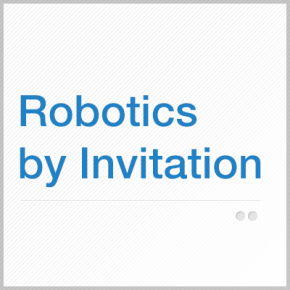
Robohub.org
Is open source a good business model for robotics?
Open source vs. proprietary software is an age old question. Since the advent of robotics, we also have the question of open source hardware.
In academia, where robotics researchers look to open source as a means of advancing community knowledge, the answer is perhaps more obvious. But in business, it’s clearly a balancing act. And so, ‘To be open, or not to be open?’ — that is the question for our panelists this month.
We asked Frank Tobe, Robert Morris and Brian Gerkey to weigh in. Here’s what they have to say …
 Brian Gerkey on “Is open source a good business model for robotics?”
Brian Gerkey on “Is open source a good business model for robotics?”
The IT economy has powerfully demonstrated what happens when companies can leverage open source infrastructure when they build new products and services. A company like Google would never have come into existence had they not been able to rely from the beginning on solid open source tools like Python and GCC. IBM would arguably have not been able to make its immensely successful pivot from products to services without Linux. How many startups these days begin as a cloud-hosted machine running some derivative of the venerable LAMP stack? …
 Robert Morris on “Is open source a good business model for robotics?”
Robert Morris on “Is open source a good business model for robotics?”
The premise of this question is that robotics companies are manufacturers and that there is choice between an open source and closed source business model. Robotics companies are best thought of as service companies (even manufacturers, especially when moving beyond early adopters) and openness is not an ‘either/or’ choice, but rather a continuum. In this day and age the question is, ‘What do you need to keep open create value for your customers?’ …

Frank Tobe on “Is open source a good business model for robotics?”
Certainly robotics has its share of proprietary software and control systems. Each robot manufacturer markets their products based on the need for secure, proprietary and un-shared systems so that they can ensure stability and control. Whole industries have been set up to bridge those proprietary barriers so that multi-vendor solutions can happen …
tags: Brian Gerkey, c-Business-Finance, cx-Research-Innovation, Frank Tobe, open source, ROS



